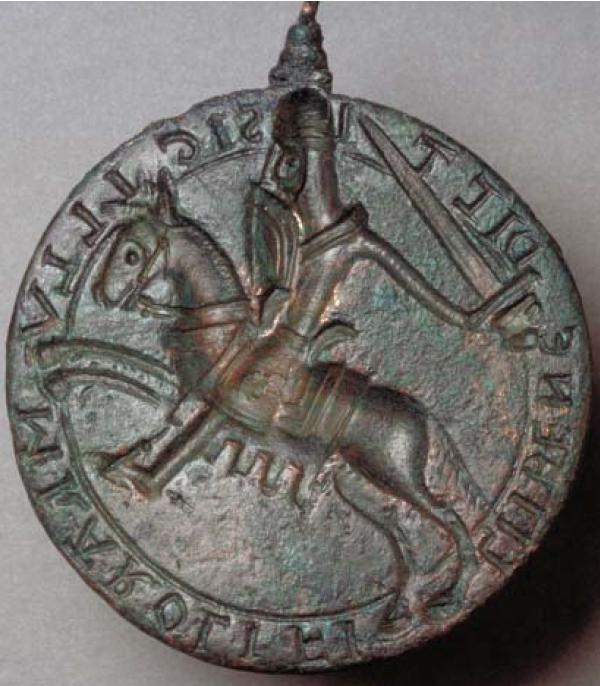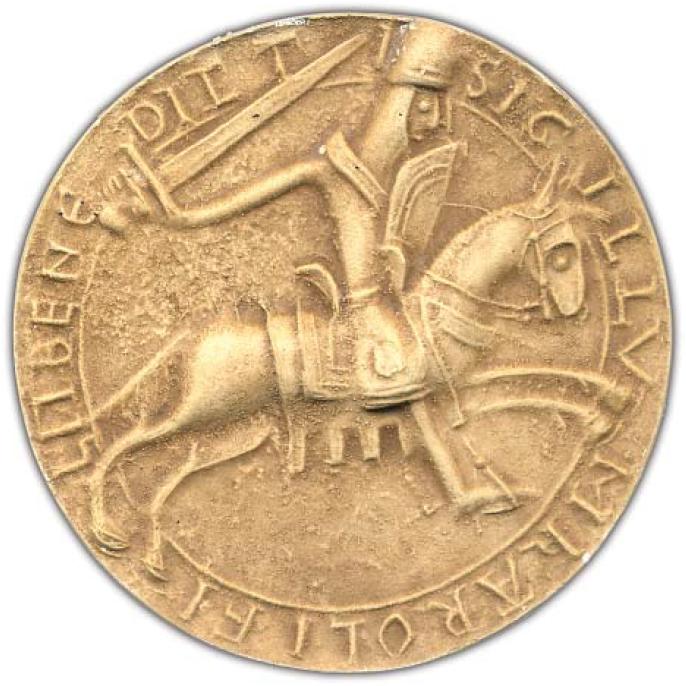Seal of Karl Bengtsson, Sweden, c.1180-1219
|
|  Matrix of Karl Bengtsson  Seal of Karl Bengtsson |
|
|  Matrix of Karl Bengtsson  Seal of Karl Bengtsson |
On its upper edge the matrix has a twisted knob, probably the remains of a suspension loop. It seems to have spent time in the earth, but is not corroded. The seal is a modern impression of the matrix. The legend reads: SIGILLVM KAROLI FILII BENEDICTI (Karl, the son of Benedict, or in the Swedish form, Bengt). Expressing it with a simple patronymic, as was common in medieval Sweden, we arrive at 'Karl Bengtsson'. As only members of a very restricted social group were able to use seals in this period, we may start to identify an owner by examining the people related to Jarl Birger (Bengt Brosa). His father was Bengt Snivil, member of one of Sweden's most influential families. So Birger himself was a Bengtsson: in fact, we do not know if he was ever called Birger Brosa, as this nickname can only be found in an Icelandic source.12
We know from several sources that Jarl Birger had a brother named Karl. Documents from the 1190s mention Birger and 'Karolus, frater eius' or 'frater ducis'.13 This Karl must have been called Karl Bengtsson, but we also know from the 13th-century Hakonar saga by the Icelander Sturla Thordarsson that Karl was called, at least in some circles, 'the deaf' (döve).14 He is regarded as having been born, at the very latest, in 1165, and is also thought to have been so much younger than Birger that they must merely have been half brothers. It is not known at what age a nobleman acquired his seal in 12th century Sweden, but a reasonable assumption is upon reaching his majority. According to medieval Swedish provincial laws this was at the age of 15. This would date the matrix to about 1180. We also know that Karl Bengtsson became jarl only in 1219, many years after the death of his brother Birger. This would also mean that the legend of the seal would be correct until 1219 at the latest. He served as the jarl of King Johan Sverkersson, and followed him on a crusade to the Estonian west coast where he fell in August 1220.15
12 Svensktbiografiskt lexikon, 'Birger (I)'.
13 National Archives, DS 70; DS II.
14 Svensktbiografiskt lexikon, 'Karl döve'.
15 The chronicle of Henry of Livonia, 190f.
Source: "The Oldest Equestrian Seals in Sweden: Karl Sverkersson, Birger Brosa and Karl the Deaf" by Göran Tegnér in Good Impressions: Image and Authority in Medieval Seals
Referenced on p.24 MAA - 396 - Medieval Scandinavian Armies (1): 1100-1300 by David Lindholm and Angus McBride
Seal of Karl Döve, Jarl, Sweden, early 13th century. The old-fashioned style of arms, armour and horse harness may result from the fact that this seal was based upon an earlier example made for Birger Brosa. (Riksarkivet, Stockholm)